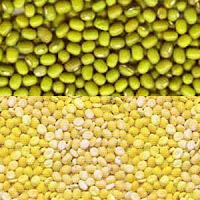SmartCooks here.
 From my Saturday afternoon of foraging in the woods for wild leeks, I made what I'm calling Quick Pickled Wild Leeks (Ramps).
From my Saturday afternoon of foraging in the woods for wild leeks, I made what I'm calling Quick Pickled Wild Leeks (Ramps). These jars join two other ramp concoctions in the fridge, i.e.,
i) wild leek pesto (6 small batches in the fridge and freezer!); and
ii) green kimchi (fermenting in the fridge).
Recipes for the first two have been posted separately. Even though the ramp bulbs are a little on the small, early side, I got two nice jars of pickles out of them.
Substitutions for Lovage and Other Ingredients I Couldn't Find Locally
The best recipe I found was from Hungry Tigress, who writes from her farm home in the Berkshires somewhere. I adapted the recipe a bit because she really goes local for ingredients and I simply wouldn't easily find some of them easily. I went with her suggestions for substitutions.
 For example, she uses the herb 'lovage' (picture left) in the recipe and, well, I haven't seen it in my shopping travels locally so I substituted two ingredients found much more easily -- celery leaves and flat parsley.
For example, she uses the herb 'lovage' (picture left) in the recipe and, well, I haven't seen it in my shopping travels locally so I substituted two ingredients found much more easily -- celery leaves and flat parsley. Quick research shows that lovage is a very old herb with a unique flavour of anise and celery. It can be used as a salt substitute and is flavourful in soups, stews, anything tomato-y. Plus, every part of the plant is edible. However I no did find.,,,,
The other ingredient that helps cut down on the amount of sugar is maple syrup. The Tigress used one made by her neighbour that looks more like a light-coloured maple honey. I'm quite happy with my Gatineau, darker coloured maple syrup so that's why jar (up top) looks darker than hers. (Picture right AND her ramps are also more mature.)
Finally, Tigress suggests using raw sugar. Gotta do some research on all the various types of sugar available and which one(s) to use, where and why. The usual rule for me is to use as little as possible; beyond that, I'm lost on refined, unrefined, and all the rest of it. There's no doubt that raw sugar is better because it is unrefined and contains more nutrients than the 'refined white death'. Anyway, I didn't have any so substituted regular old sugar -- 1/4 cup didn't seem too excessive and it is necessary to help cure the pickles.
These pickles are quick, easy to make and last up to 3 months in the refrigerator. Not a hope they'll last that long....
UPDATED Note: The first two batches I made were fabulous and I used a combo of celery and flat parsley. I couldn't find raw sugar so just substituted white sugar and I found the pickles quite sweet. Through further research, it seems raw sugar is not readily sold in Canada -- doesn't meet our healthy/hygiene guidelines. So I substituted light brown sugar (could have been dark brown sugar) and I found the taste of the next batches much improved. So, I've updated the recipe to reflect this. The pickles are just yummmmm.... unlike any store-bought ones and very easy to make!!!!
Recipe for Quick Pickled Ramps (Wild Leeks)
2 lbs ramps, greens removed (use greens for pesto or kimchi!)
3 cups white wine vinegar
2 cups water
1 T salt
1/4 cup raw sugar (ideally)*** or light or dark brown sugar
1/4 cup maple syrup
1 & 1/2 tsp whole allspice
2 tsp white pepper
1 small bunch whole lovage leaves, about 1/4 cup, or combo of celery leaves and flat parsley
2 quart mason jars and lids
**** In researching, I discovered raw sugar is not sold here in Canada because it does not meet Canadian standards for health and hygiene. Suggestions are to substitute light or dark brown sugar.
Directions:
1. Add all ingredients except the lovage (or celery`parsley mixture) and the wild leeks (ramps) to a medium-sized sauce pan and bring to the boil.
2. Once boiling, add the clean and greened ramps, bring back to the boil and let boil for 1 minute. Take off heat and let cool.
3. Add lovage leaves (celery/parsley) evenly to the quart jars. Fill jars with cooled ramps and liquid.
4. Place in refrigerator to cure for 5 days.
Enjoy!




























